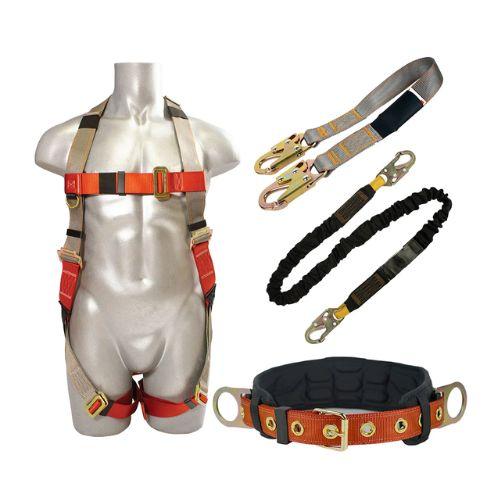Notifications

5 minutes, 15 seconds
-60 Views 0 Comments 0 Likes 0 Reviews

Fall protection equipment, such as safety harnesses and lanyards, plays a vital role in keeping workers safe at heights. Using the right gear can prevent serious injuries or even save lives. However, like any safety equipment, these devices don’t last forever. Knowing when to replace your fall protection harness and lanyard is crucial to maintaining a safe working environment. This blog explains key signs and guidelines to help you decide the right time to replace your full body fall protection harnesses and lanyards.
Fall protection harnesses and lanyards are built from durable materials like nylon, polyester, and metal components. Despite their strength, these materials degrade over time due to exposure to sunlight, chemicals, moisture, and wear from regular use. Manufacturers usually provide guidelines for the service life of their products, often between 3 to 5 years under normal conditions. However, the actual lifespan can be shorter if the equipment is exposed to harsh environments or sustained damage.
Safety harnesses and lanyards are designed to absorb energy and reduce the force exerted on your body during a fall. Over time, wear and tear can reduce their strength and reliability. Using damaged or old equipment can result in failure during a fall, putting the user at great risk. Regular inspection and timely replacement ensure that your fall protection gear functions as intended, offering the protection you need.
Inspect your safety harness regularly. Look for cuts, frayed fibers, burns, or abrasions on the webbing. If you notice any signs of damage, it is essential to replace the harness immediately. Even small tears or worn areas can reduce the harness’s strength.
The metal parts like buckles, D-rings, and snaps should be checked for corrosion, cracks, deformation, or malfunction. If any hardware component is compromised, it can affect the overall safety of the harness and should be replaced.
The webbing on a full body fall protection harness should maintain its shape and strength. If it has stretched out or lost elasticity, the harness may not fit correctly or provide adequate protection during a fall. Replace the harness if you notice significant stretching.
If your harness or lanyard has been involved in a fall arrest, even if there is no visible damage, it must be replaced. The equipment may have absorbed impact forces that could weaken its materials, compromising safety in future incidents.
Manufacturers usually provide specific service life limits for their safety harnesses and lanyards. Even without visible damage, once a harness reaches the recommended age, it should be retired and replaced. Always check the user manual or labels for expiration dates or suggested replacement intervals.
Conduct daily visual inspections before use and detailed inspections monthly or as required.
Store harnesses and lanyards in clean, dry, and temperature-controlled areas away from sunlight and chemicals.
Use mild soap and water to clean the webbing, avoiding harsh chemicals that could degrade the material.
Ensure workers understand how to inspect and maintain their fall protection equipment properly.
Your main goal when using safety harnesses fall protection equipment is to ensure maximum safety and reliability. Knowing when to replace your full body fall protection harnesses and lanyards is key to avoiding accidents and injuries. Replace your gear immediately if you notice damage, after a fall event, or when it reaches the end of its recommended service life. Regular inspections, proper maintenance, and adherence to manufacturer guidelines keep your fall protection system effective, providing peace of mind while working at heights.

